08 Nov Supreme court disadvantage: Judges could gut key environmental justice standard
The U.S. Supreme Court has a stack of cases on its docket this session that should concern environmentalists, notably the suite of cases aimed at limiting the government’s ability to regulate greenhouse gases, and the case involving an oil billionaire who wants to dump even more of his dirty money into politics. Here’s one more to add to that list: Mount Holly Citizens in Action v. Township of Mount Holly, on the calendar for December 4. Environmental justice advocates and civil rights activists hope it never makes it before the high bench.
Residents of the Gardens, a predominantly African American and Latino neighborhood in Mount Holly, New Jersey, brought the case against the township’s governing officials. Those officials made plans in 2003 to demolish the entire Gardens neighborhood, saying it was too blighted to remain, so that they could build new, expensive housing in its place. They planned this “to save the people from that neighborhood,” as one un-named former township official told Adam Serwer in his in-depth report on the case for MSNBC. (For a fuller profile of the neighborhood and the dispute, I highly recommend reading his story.)
But while this protracted legal battle started out as a group of residents fighting to save their homes, it has become a referendum on a pivotal legal standard under civil rights law. That legal standard, called “disparate impact,” allows a minority group to sue if it can prove that the effects of plans or policies will result in racial discrimination — without having to prove that planners or policymakers intentionally set out to discriminate.
Gardens residents used the disparate impact standard to stop the township’s redevelopment plans. But township officials appealed all the way to the Supreme Court, arguing not only that the residents can’t use that claim, but also that the mere requirement under the Fair Housing Act to consider racial minorities at all is an infringement on white people’s constitutional rights. It’s the same argument that was made in the affirmative action and voting rights cases before the Supreme Court earlier this year, where white plaintiffs claimed they were the victims of civil rights violations.
As David Gans, an attorney with the nonprofit Constitutional Accountability Center explains in his blog:
Espousing a radical view of the Fourteenth Amendment that has never been the law, the township suggests that the Fair Housing Act would be unconstitutional if it prohibited both intentional and unintentional forms of racial discrimination. Mount Holly’s argument, which, if accepted, would cripple disparate impact liability as a remedy, cannot be squared with the Constitution’s text and history.
The disparate impact analysis for discrimination is a keystone of civil rights protections, not just for housing but similarly for environmental policies. An essential component of environmental justice is showing how land use for waste management, hazardous materials disposal, and permitting for polluting factories can result in disproportionate burdens suffered by black, Latino, or poor communities.
As Reilly Morse, the president of the Mississippi Center for Justice in Biloxi told me, when it comes to disparate impact, “that’s essentially what environmental justice is.”
It’s not apples to apples, in terms of how the racial discrimination analysis is applied in housing versus environmental policy. Under Mount Holly (Fair Housing Act), the analysis corresponds with Title VII under the Civil Rights Act. But for environmental civil rights complaints of this nature, it would correspond with Title VI. Also, while private citizens can bring claims under the FHA statute under Title VII, only federal agencies — the Environmental Protection Agency, for example — can bring environmental justice claims for disproportionate burdens under Title VI. (It’s worth noting that the EPA has been horrible about doing so.)
Nonetheless, if the Supreme Court strikes down the disparate impacts argument in this housing case, the decision could impact how the argument is applied in other arenas, as well.
“I think it would definitely adversely affect such claims,” says Morse, an attorney who’s brought those claims for both housing and environmental causes. Morse brought an environmental justice objection when planners tried to pull a Mount Holly-esque redevelopment plan in Turkey Creek, Miss., as seen in the documentary I just wrote about, “Come Hell or High Water.”
Just as with the Gardens, municipal officials planned to wipe the African-American Turkey Creek neighborhood off the map for new redevelopment schemes. Morse argued this would have a disparate impact on black residents as opposed to white residents in the surrounding area of Gulfport. The developer ended up withdrawing his plans. The late, great environmental justice attorney Luke Cole used similar arguments to protect communities of color in Camden, New Jersey.
The disparate impact clause of the Fair Housing Act has been upheld by 11 different federal courts of appeals over the last four decades. Which is why it’s a good thing this case may soon be settled before reaching the Supreme Court: Judging from what the Roberts court has done with affirmative action and the Voting Rights Act, a ruling on this case could be yet another coffin nail for civil rights, and, by extension, environmental justice.


